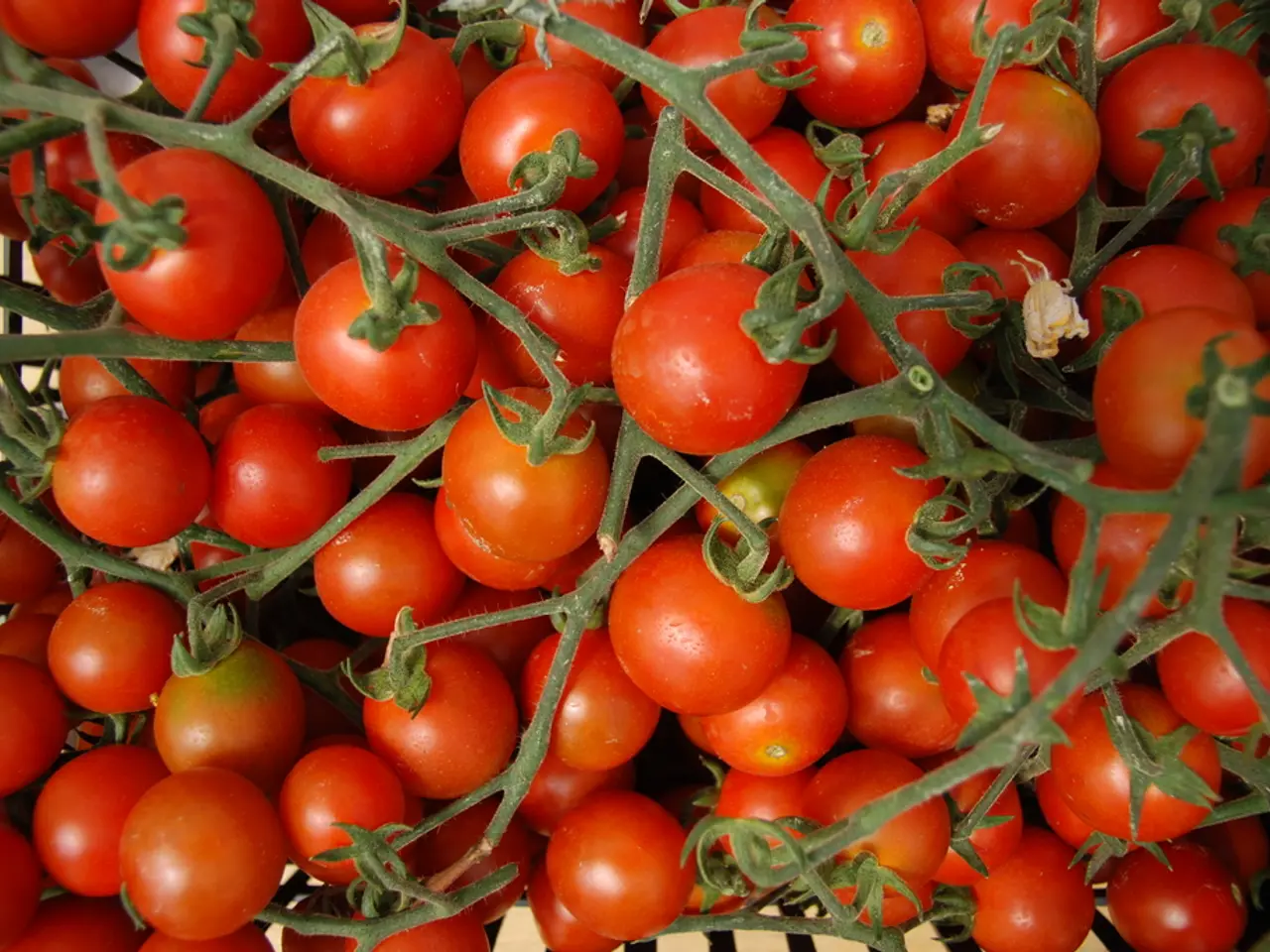Comprehensive Instructions for Cultivating Tomatoes Inside Your Home
Growing Tomatoes Indoors Year-Round: A Complete Guide
For those who crave fresh tomatoes even in the heart of winter, growing them indoors might just be the solution. Here's a comprehensive guide on how to cultivate tomatoes indoors, ensuring a bountiful harvest throughout the year.
The Four Essential Factors
To grow tomatoes indoors successfully, you need to manage four critical factors: growing medium, light, temperature, and succession planting.
Growing Medium
Use a well-draining, nutrient-rich potting mix formulated for vegetables or tomatoes. Containers with drainage holes are essential to prevent root rot. Organic rich soil with added compost or a soilless mix with perlite and vermiculite works well.
Light Requirements
Tomatoes need intense light to grow indoors. Ideally, provide at least 12–18 hours of light daily. Place plants near a south-facing window or in a sunroom for natural light, but since this is often insufficient especially during winter, supplement with full-spectrum LED grow lights.
Temperature
Maintain daytime temperatures between 65°F and 75°F (18–24°C) with slightly cooler nights. Avoid temperatures below 55°F or above 85°F, which can stress the plant or inhibit fruit set. Stable temperatures encourage consistent growth and fruiting year-round.
Succession Planting
For continuous harvest, start new tomato seeds or seedlings every 4–6 weeks indoors. Choose determinate dwarf or compact varieties suitable for container growing to avoid excessive height. Pinch off flowers early on young plants to strengthen the main stem before fruiting begins, then switch to a phosphorus-rich fertilizer to encourage flowering and fruit development.
Additional Tips
- Use organic liquid fertilizers high in potassium during flowering and fruiting stages to support healthy fruit set.
- Keep soil consistently moist but not waterlogged. Overwatering can cause root problems.
- Good airflow and humidity control prevent fungal issues that can arise in indoor environments.
- For harvesting, pick tomatoes once they reach the breaker stage and allow them to ripen indoors at 65–85°F. Avoid refrigeration to maintain flavor.
Growing Tomatoes in a Hydroponic Setup
A hydroponic system is a clean solution for indoor tomato growth, providing the plants with all needed nutrients. However, tomatoes grown in a hydroponic setup do not have organic soil, but growing them at home without pesticides in a high-quality mineral blend is a great choice.
Starting Tomatoes from Cuttings
Tomatoes can be grown from cuttings, allowing for continuous growth of the same variety. This method is particularly useful for propagating your favourite heirloom varieties.
Temperature Requirements
Tomatoes are heat-loving plants and need temperatures of around 17C (62F) at night and 26C (79F) during the day for optimal growth. Keep in mind that maintaining these temperatures may require the use of a heat mat in winter.
Watering and Pruning
Watering is crucial for indoor tomatoes, especially in a sunny window, and containers dry out quickly. Room temperature water should be used for watering. Good drainage holes are essential to prevent indoor tomatoes from sitting in water. Pruning suckers of indeterminate varieties (except dwarf varieties) is important for indoor tomato growth.
Growing Tomatoes Indoors: A Rewarding Experience
By following appropriate lighting, maintaining optimal temperature, using the right growing medium, and planning staggered plantings, you can have fresh tomatoes from indoors year-round. This requires consistent care and attention to detail but can be very rewarding.
Growing tomatoes indoors can be an alternative to starting seeds too early for the growing season. Succession planting of tomatoes indoors can result in year-round tomato production. An oscillating fan can help with air circulation for indoor tomato growth, while natural fertilizers like worm casting, fish emulsion, or Bone Meal can be used to fertilize your indoor tomatoes. Starting tomato seeds under grow lights in late winter is necessary due to insufficient sunlight hours.
With this comprehensive guide, you're now equipped to embark on your indoor tomato-growing adventure! Happy growing!
[1] The Spruce, How to Grow Tomatoes Indoors, https://www.thespruce.com/grow-tomatoes-indoors-3100842
[2] The Old Farmer's Almanac, Growing Tomatoes Indoors, https://www.almanac.com/plant/growing-tomatoes-indoors
[3] The Garden Glove, How to Grow Tomatoes Indoors, https://thegardenglove.com/how-to-grow-tomatoes-indoors/
[4] The Kitchn, How to Grow Tomatoes Indoors, https://www.thekitchn.com/how-to-grow-tomatoes-indoors-213928
[5] SF Gate, How to Grow Tomatoes Indoors, https://homeguides.sfgate.com/grow-tomatoes-indoors-53331.html
- To achieve a successful indoor tomato cultivation, consider using a nutrient-rich organic soil mixed with compost or a soilless mix containing perlite and vermiculite.
- Incorporate succession planting by starting new seeds or seedlings every 4-6 weeks, with suitable container-friendly varieties, for a continuous year-round harvest.
- Maintaining a temperature between 65°F and 75°F during the day and slightly cooler nights encourages consistent growth and fruit production year-round.
- Optimal indoor tomato growth requires12–18 hours of light daily, supplemented with full-spectrum LED grow lights when natural light is insufficient.
- Strive for good airflow and humidity control to prevent fungal issues, and avoid refrigeration to maintain tomato flavor.
- Consider growing tomatoes hydroponically for a clean setup, providing all needed nutrients, though this methoddoesn't use organic soil.
- Growing tomatoesfrom cuttings can be useful for propagating your favorite heirloom varieties, and requirestable daytime temperatures of around 26°C (79°F) and night temperatures of 17°C (62°F).




